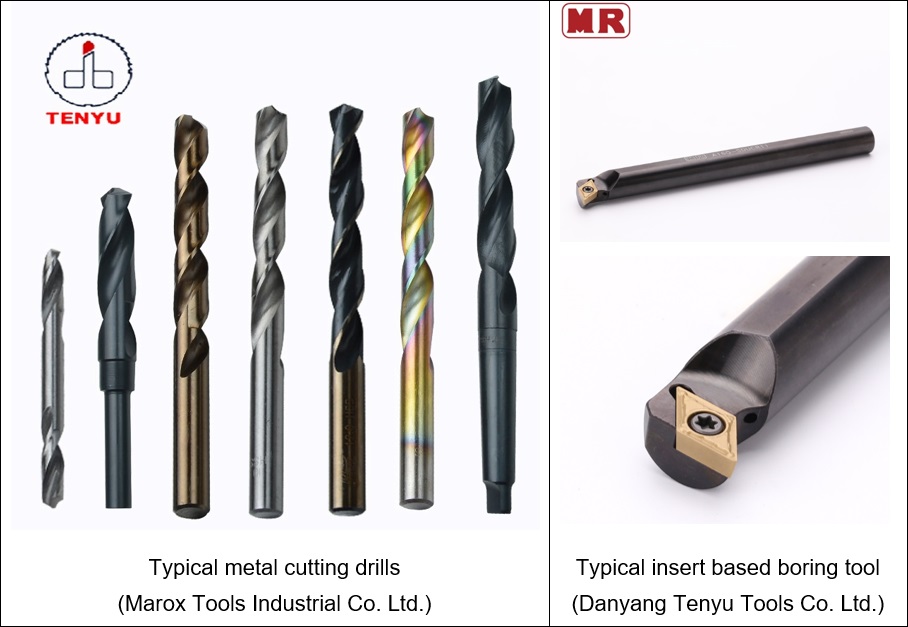In order to create a hole on a solid surface, a series of different machining processes are carried out depending on the hole diameter, finish and tolerance level requirement. One typical steps for hole making can be— (i) Centering, (ii) Drilling, (iii) Boring, (iv) Reaming, and (v) Honing. Each of these processes has different objectives and can be applied under certain conditions. One operation cannot be carried out prior to another. Now, centering is carried out to align and locate a hole on a flat solid surface. Although it is optional step, centering improves alignment and accuracy of the hole center.
Drilling is carried out to originate a hole. It utilizes a multi-point cutter to make a cylindrical hole on the solid object. Chip load in drilling is proportional to the drill diameter. Thus large diameter hole cannot be made in a single pass. Thus, either multiple drilling passes are carried out with progressively larger diameter drills or boring is performed to enlarge the hole diameter. Thus, boring is carried out to enlarge the diameter of an existing hole. It can also convert one cylindrical hole into taper one. However, it cannot originate a hole. Thus boring can be performed only in presence of a hole (i.e. either after drilling or o hollow cast object). Reaming and honing are used to smoothen the hole surfaces at different levels of finish and tolerance. These two processes can be carried out either after boring or directly after drilling. Various similarities and differences between drilling and boring are discussed in following sections.

Similarities between drilling and boring
- Both drilling and boring processes are machining or metal cutting operations. So excess material is gradually removed from workpiece with the help of a cutting tool. However, different processes utilize different types of cutter.
- Both the processes come under subtractive manufacturing (or top-down) approach.
- Both processes are associated with hole fabrication. However, their objective and point of application are different.
- Chips are produced in both the processes, i.e. material removal takes place by shearing in the form of chips.
Differences between drilling and boring
| Drilling | Boring |
|---|---|
| Drilling operation is performed to originate a hole. | Boring operation is performed to enlarge the hole diameter. |
| Drilling is the first phase for hole machining. However, sometime centering is done prior to drilling. | Boring is carried out after drilling. Boring cannot be performed if there is no drilled hole or hollow part. |
| Drill is meant for efficient plunging into the workpiece. So axial length of the hole can be increased by drilling operation. | Plunging is not possible by boring tool. So length of the hole cannot be increased by boring. |
| Hole diameter is limited to the drill diameter, in fact, they are exactly same. | Boring is performed to increase the hole diameter only. |
| Cutting tool used in drilling operation is called Drill. | Cutting tool used in boring operation is called Boring Bar or tool. |
| Drill is a multi-point cutter. That means drill has two or more cutting edges that can simultaneously remove material. | Boring bar is a single point cutter, so it has only one main cutting edge that removes material from workpiece. |
| Chip evacuation is the major problem in drilling. So it cannot be plunged continuously for longer length. | Chip evacuation is not an issue in boring. So it can be fed continuously without any risk of chip clogging. |
| A taper hole cannot be created by drilling operation. It only makes straight cylindrical holes. | Since boring operation is similar to internal turning, taper holes can be easily created by boring. |